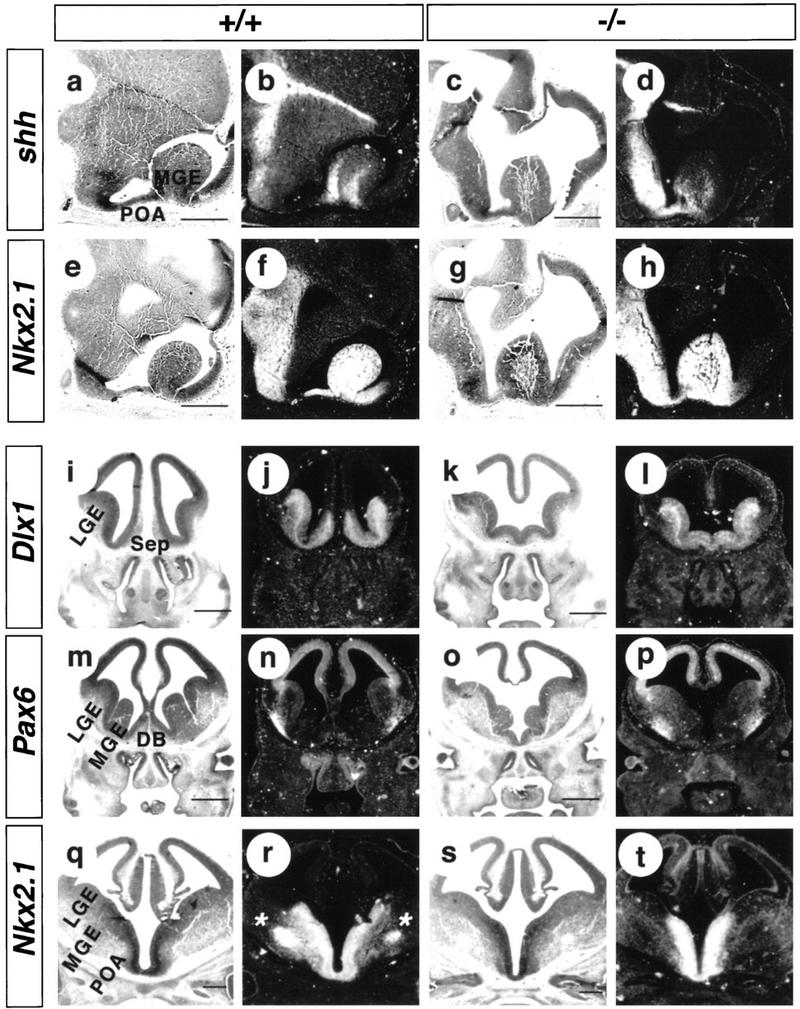Figure 3.

Despite morphological alterations, the patterning of the ventral telencephalon is apparently normal in Vax1 mutants. Successive pictures are bright field and dark field of the same view to illustrate the morphological defects observed in the mutants. (a–h,i–t) In situ hybridization on sagittal sections of 11.5-dpc embryos, and on transverse sections of 13.5-dpc embryos, respectively. At 11.5 dpc, the anterior preoptic area (POA) is underdeveloped in the mutant (cf. a and e to c and g). At 13.5 dpc, deficient growth of the mutant ventral forebrain is observed in the septum (Sep) and the medial ganglionic eminence (MGE) (cf. i to k and m to o) and results in holoprosencephaly (see k and o). The pattern of expression of Shh (b,d) and Nkx2.1 (f,h) at 11.5 dpc and that of Dlx1 (j,l) or of Pax6 (n,p) at 13.5 dpc are apparently not modified in homozygous mutants, suggesting that the patterning of the forebrain is not affected by the Vax1 mutation. In addition, the Nkx2.1 signal observed in differentiated or differentiating cells in wild-type embryos in the mantle layer over the subventricular zone of the MGE (asterisks in r) was greatly diminished or absent in Vax1 homozygous animals (t), suggesting that the Vax1 mutation perturbes the regulation of the cell proliferation or differentiation at least at that level. (DB) Diagonal band; (LGE) lateral ganglionic eminence; (MGE) medial ganglionic eminence; (POA) preoptic area; (Sep) septum. Bar, 0.5 mm.
